Latest Blogs
Groin Pain: Common Causes, Symptoms, and Treatment Options
Groin pain is a common complaint that can affect people of all ages, genders, and activity levels. Whether you're an athlete, a desk worker, or a senior citizen, experiencing discomfort in the groin area can be concerning and disruptive to your daily life. Groin pain causes can be varied, ranging from muscle strains and hernias to hip joint problems and urological conditions. Identifying the underlying reason is crucial for proper treatment. This article will provide a comprehensive overview of groin pain symptoms, diagnosis, and treatment options, empowering you with the knowledge to manage this condition effectively. What is groin pain? Groin pain is discomfort or soreness in the area where the abdomen meets the upper thigh. This region contains muscles, ligaments, nerves, and organs, making it prone to pain from injury or medical conditions. Groin pain can occur on one or both sides, may develop suddenly or gradually, and vary in intensity from a dull ache to a sharp, stabbing sensation. The characteristics of the pain, such as its location, duration, and severity, often provide clues about the underlying cause. Common groin pain causes include muscle strains, hernias, kidney stones, or nerve issues. Identifying the exact cause is essential for proper groin pain treatment, and consulting a healthcare provider is recommended if the pain persists, worsens, or is accompanied by other concerning symptoms. How common is it? Groin pain is a common complaint, particularly among athletes and individuals engaged in physical activities that involve rapid changes in direction or repetitive movements. However, groin pain can also affect less active individuals due to various non-athletic causes. What causes groin pain? Groin pain causes can vary widely and may include muscle strains, hernias, hip issues, nerve problems, and urinary or reproductive conditions. Gastrointestinal issues, such as appendicitis or kidney stones, can also trigger groin pain. Identifying the exact cause is essential for effective groin pain treatment. Consulting a healthcare provider can help determine the underlying issue and guide appropriate care. Whether the pain is sudden or persistent, understanding its source is key to managing symptoms and promoting recovery. Causes of primary groin pain Athletic or movement-related injuries Muscle strains are a frequent cause of groin pain, particularly in athletes who engage in sports that involve quick directional changes, kicking, and twisting movements. The adductor muscles of the inner thigh are especially prone to strains. Hernias Weaknesses in the abdominal wall can allow internal tissues to protrude, causing a painful groin bulge. Inguinal hernias are the most common conditions for groin pain in males. Hip conditions Problems in the hip joint, such as arthritis, labral tears, and femoroacetabular impingement, can cause groin pain. Nervous system conditions Compression or irritation of the nerves that supply the groin area, such as the ilioinguinal nerve, can lead to groin pain and sensory changes. Urological conditions Kidney stones, infections, and other disorders of the urinary tract may cause pain that radiates to the groin. Gynaecological conditions In women, conditions like ovarian cysts, endometriosis, and pelvic inflammatory disease can be sources of groin discomfort. Gastrointestinal conditions Although less common, some digestive problems like hernias and intestinal inflammation may refer pain to the groin. Causes of secondary groin pain Secondary groin pain can arise from systemic conditions that affect multiple body parts. These conditions may indirectly cause discomfort in the groin area due to referred pain or inflammation. Examples include infections, autoimmune disorders, or certain cancers. What does groin pain feel like? The sensation of groin pain can vary depending on the underlying cause. It may present as a dull ache, a sharp or stabbing pain, or a burning sensation. The pain can be constant or intermittent, and its intensity may fluctuate. Groin pain symptoms often worsen with physical activity, such as walking, running, or climbing stairs, and improve with rest. In some cases, the groin pain may radiate to the inner thigh, lower abdomen, or scrotum. Additionally, individuals may experience stiffness, weakness, or a pulling sensation in the affected area. Diagnosing the source of groin pain Diagnosing the source of groin pain involves a comprehensive evaluation by a healthcare professional. The diagnostic process typically includes a thorough medical history review and physical examination. The doctor may inquire about the onset, duration, and characteristics of the pain, as well as any associated symptoms or aggravating factors. During the physical exam, the healthcare provider will assess the groin area for tenderness, swelling, or visible abnormalities. They may also perform specific tests or manoeuvres to evaluate the range of motion, strength, and stability of the hip joint and surrounding muscles. Imaging tests, such as X-rays, ultrasound, or magnetic resonance imaging (MRI), may be ordered to visualise the internal structures and rule out certain conditions. For example, an X-ray can help identify fractures or arthritis, while an MRI can provide detailed images of soft tissues, including muscles, tendons, and ligaments. In some cases, additional diagnostic procedures may be necessary for groin pain. For instance, if a hernia is suspected, the doctor may recommend an ultrasound or a specialised test called a herniography. If a nerve entrapment is suspected, nerve conduction studies or electromyography may be performed to assess nerve function and muscle activity. How do we relieve groin pain? Groin pain treatment approach depends on the specific cause identified. However, some general measures that can help alleviate discomfort include: Rest: Avoiding activities that aggravate the pain and allowing the affected area to heal Ice: Applying cold packs to the groin for 15-20 minutes several times a day to reduce pain and inflammation Heat: Using heat therapy to relax tense muscles and promote circulation Over-the-counter pain relievers: Nonsteroidal anti-inflammatory drugs (NSAIDs) like ibuprofen can help manage pain and inflammation Physical therapy: Stretching and strengthening exercises can improve flexibility, stability, and support of the groin muscles and surrounding structures. When should we be concerned about groin pain? While most cases of groin pain resolve with conservative measures, some signs warrant prompt medical attention. See a doctor immediately if the pain is severe, comes on suddenly, or is accompanied by fever, chills, nausea, or vomiting. Can groin pain be prevented? Preventing groin pain involves maintaining the strength and flexibility of the muscles and structures in the region. This can be achieved through regular exercise, proper warm-ups before physical activity, and avoiding excessive strain or overuse. Maintaining a healthy body weight and addressing any underlying medical conditions also helps reduce the risk of developing groin pain. When to see a doctor Minor groin pain can often be managed with self-care measures. However, it's important to consult a doctor if the pain persists beyond a few days, gets progressively worse, or interferes with your daily activities. Seek prompt medical care if the groin pain is severe or you notice symptoms like swelling, fever, or difficulty bearing weight on the affected leg. Conclusion Groin pain is a common but potentially debilitating condition that can stem from various musculoskeletal, neural, and organ-related causes. If you're experiencing persistent groin pain, it's crucial to consult a healthcare professional for an accurate groin pain diagnosis and personalised treatment plan. Metropolis Healthcare, with its network of advanced diagnostic labs and skilled technicians across India, can be your trusted partner in this journey. Our state-of-the-art pathology services and convenient at-home sample collection can help identify the root cause of your groin pain, empowering you to take control of your health.
White Spots on Lips: Causes, Symptoms, and Treatment
Noticing white spots on lips can be worrying, leaving you wondering about the underlying cause and whether treatment is needed. While some causes, like Fordyce spots, are harmless, others, like oral thrush, require medical attention. This guide will help you understand the various reasons white bumps on lips may appear, the associated symptoms, and white spots on lips treatment options. Armed with this knowledge, you can take proactive steps to care for your lip health. What are white spots on lips? White spots on lips refer to small, pale bumps or patches that appear on the lips or surrounding skin. They can occur due to several reasons, ranging from benign conditions like Fordyce spots and milia to more serious issues like oral thrush or even oral cancer. The appearance of these white spots on lips can vary, with some being more raised or textured than others. Depending on the underlying cause, they may be accompanied by other symptoms like itching, pain, or dryness. Regularly inspecting your lips and noting any changes is important for early detection and appropriate management. 5 Common Causes of White Spots on Lips Fordyce Spots Main cause of Fordyce spots Fordyce spots are one of the most common white spots on lips causes. These tiny, painless bumps are actually enlarged oil glands called sebaceous glands. They are considered a normal anatomical variation and are not contagious or harmful. Fordyce spots tend to be more noticeable in people with oily skin and typically appear during puberty or adulthood. While the exact cause is unknown, factors like hormonal changes, genetics, and sun damage may play a role. These white bumps on lips are often confused with other conditions like milia or herpes, but a dermatologist can provide an accurate diagnosis. Medical Treatment Since Fordyce spots are benign, medical treatment is generally not necessary unless they cause significant cosmetic concern. In such cases, options like laser therapy, electrodessication, or surgical excision may be considered to reduce the appearance of these white spots on lips. However, it's crucial to weigh the potential risks and costs against the aesthetic benefits. Consulting a dermatologist can help determine if treatment is appropriate for your situation. Home Remedies As Fordyce spots are a natural occurrence and not a sign of poor health, specific home remedies are not required. Maintaining good oral hygiene practices like brushing twice daily, flossing, and using an antiseptic mouthwash can help prevent other lip concerns and keep your smile healthy. If the appearance of these white spots on lips causes distress, using a lip balm or moisturiser can help minimise their prominence. Remember, Fordyce spots are extremely common and are not a cause for embarrassment or alarm. Milia Main cause of Milia Milia are tiny, keratin-filled cysts that appear as white bumps on lips or surrounding skin. They form when dead skin cells become trapped beneath the surface, rather than shedding normally. Milia are common in newborns but can occur in people of all ages. Risk factors include sun damage, skin resurfacing procedures, use of heavy skincare products, and certain medical conditions like rosacea or dermatitis. These pearly white spots on lips are often confused with whiteheads, but milia lack an opening and cannot be effectively extracted at home. Medical Treatment In most cases, milia clear up on their own within a few weeks or months without treatment. However, if these white spots on lips casues cosmetic concern or persist, a dermatologist may recommend extraction, cryotherapy, or laser treatment. Professional removal techniques are more effective and safer than attempting to extract milia at home, which can lead to scarring or infection. If you suspect your lip bumps are milia, consult a skincare professional for personalised guidance and white spots on lips treatment options. Home Remedies While medical extraction is the most effective way to clear milia, some white spots on lips remedy at home may help prevent their formation or encourage natural healing. Gentle exfoliation with a lip scrub or soft toothbrush can help remove dead skin cells and unclog pores. Applying a retinoid cream or face peel containing alpha-hydroxy acids may also promote cell turnover. Canker Sores (Aphthous Ulcers) Main cause of Canker Sores Canker sores, medically known as aphthous ulcers, are small, shallow lesions that develop on the soft tissues of the mouth or lips. Unlike cold sores, canker sores are not contagious and are not caused by the herpes simplex virus. The exact cause is unknown, but triggers may include: Minor injury to the mouth from dental work, hard brushing, or biting Toothpastes and mouthwashes containing sodium lauryl sulfate Food sensitivities, particularly to acidic or spicy foods Vitamin deficiencies, especially B-12, zinc, folic acid, or iron Hormonal shifts during menstrual cycles Emotional stress or lack of sleep Bacterial infections like H. pylori Autoimmune disorders or gastrointestinal diseases While not a direct cause of white spots on lips, canker sores can be mistaken for them in the early stages when they appear as small, round, white or yellowish lesions before developing into painful ulcers. Medical Treatment Most canker sores heal within one to two weeks. Over-the-counter pain relievers, gels, or pastes can ease discomfort and promote healing. For severe or persistent sores, a doctor may recommend corticosteroids, antibacterial mouthwash, or oral medication. Frequent or slow-healing sores may require medical evaluation for underlying issues. Home Remedies To soothe canker sores and promote healing, try home remedies like warm saltwater rinses, baking soda paste, or dabbing milk of magnesia. Honey and aloe vera can also reduce irritation. Avoid spicy or acidic foods. Though often mistaken for white bumps on lips, canker sores aren’t contagious and heal naturally. Oral Thrush (Candidiasis) Main Cause of Oral Thrush Oral thrush is a fungal infection triggered by an overgrowth of Candida species, particularly Candida albicans. While this yeast normally resides in the mouth harmlessly, certain factors can upset the natural balance, allowing Candida to thrive. Common risk factors include weakened immune systems from conditions like HIV/AIDS, diabetes, or cancer. Medications such as corticosteroids or broad-spectrum antibiotics may also disrupt oral flora. Wearing dentures, especially if poorly fitted or unclean, can increase susceptibility. Smoking, dry mouth, and poor oral hygiene are additional contributors, particularly in infants and older adults. Medical Treatment Treating oral thrush promptly is crucial to prevent its spread. Antifungal medications like nystatin or fluconazole are commonly prescribed in the form of lozenges, tablets, or liquid suspensions. These treatments target Candida overgrowth and help restore oral flora balance. Individuals with weakened immune systems or recurrent infections may require extended treatment. Addressing underlying conditions and risk factors is vital for preventing future episodes. Home Remedies Home remedies can complement medical treatment. Rinsing with warm saltwater soothes irritation, while a soft toothbrush minimises discomfort. Cleaning dentures and consuming probiotics, like yoghurt, can support healthy bacteria. Reducing sugar and yeast-rich foods may further curb Candida growth. Practicing good oral hygiene is key to preventing these white bumps on lips. Oral Cancer Main Cause of Oral Cancer Oral cancer is a serious condition that can present as persistent white spots on lips or inside the mouth. While not as common as other causes of lip discolouration, oral cancer can be life-threatening if untreated. Key risk factors include tobacco use (smoking or chewing), heavy alcohol consumption (especially when combined with smoking), and prolonged sun exposure to the lips, particularly in fair-skinned individuals. Human papillomavirus (HPV) infection, especially strains 16 and 18, also increases risk. A weakened immune system due to conditions like HIV/AIDS or certain medications can further heighten vulnerability. Poor oral hygiene and chronic irritation may contribute as well. Medical Treatments Early detection is vital for successful treatment. Regular dental check-ups and self-examinations can help identify concerning white spots on lips or other warning signs. If oral cancer is suspected, a biopsy is typically performed to confirm the diagnosis. Treatment options vary based on the cancer’s stage and location but may include surgery, radiation therapy, chemotherapy, targeted therapy, or immunotherapy. A multidisciplinary care team will create a personalised treatment plan, and follow-up care is crucial to prevent recurrence. Home Remedies While no home remedies can cure oral cancer, healthy habits can help reduce risk and support recovery. Quit smoking, limit alcohol intake, and protect your lips with SPF lip balm. Vitamin Deficiency Main Cause of Vitamin Deficiency While vitamin deficiencies, particularly of B vitamins, can lead to changes in the oral mucosa, their direct association with white spots on lips is less common. However, severe deficiencies in vitamins B2 (riboflavin), B3 (niacin), and B12 (cobalamin) can cause oral symptoms such as inflammation, ulceration, and discolouration. Medical Treatment Treatment for vitamin deficiencies involves replenishing the body's stores of the deficient vitamin(s) under medical supervision. This may include: Oral supplements: Taking vitamin pills or liquids to correct the deficiency Intramuscular injections: In cases of severe vitamin B12 deficiency, injections may be necessary to bypass any absorption issues. Dietary changes: Incorporating vitamin-rich foods into the diet to maintain adequate levels Home Remedies Preventing vitamin deficiencies through a balanced, nutrient-rich diet is the best approach for this type of white spots on lip remedy. Some tips include: Consuming a variety of fruits, vegetables, whole grains, lean proteins, and healthy fats Choosing fortified foods, such as breakfast cereals and plant-based milks Considering a multivitamin supplement, especially for those with restricted diets or absorption issues Consulting a healthcare provider before starting any new supplement regimen Allergic Reactions Main Cause of Allergic Reactions Allergic reactions to certain foods, cosmetics, or oral care products can cause irritation and inflammation of the lips, potentially leading to the appearance of white spots on lips. Common allergens include: Food additives, such as preservatives or artificial colours Fragrances and flavouring agents in lip balms or toothpaste Metals, such as nickel in dental fillings or jewelry Latex in dental dams or gloves Medical Treatment Treatment for allergic reactions on the lips focuses on identifying and avoiding the allergen, as well as managing symptoms. Some medical white spots on lips treatment options include: Antihistamines: Oral or topical antihistamines can help reduce itching, swelling, and inflammation. Corticosteroids: Topical corticosteroid creams or ointments can help alleviate more severe allergic reactions. Allergy testing: Skin prick tests or patch tests can help identify the specific allergen(s) responsible for the reaction. Home Remedies Preventing and managing allergic reactions on the lips can be done through some simple home remedies: Identifying and avoiding known allergens Reading ingredient labels carefully on cosmetics, oral care products, and food items Applying a cold compress to the lips to help reduce swelling and discomfort Using a mild, fragrance-free lip balm to keep the lips moisturised and protected Leukoplakia Main cause of Leukoplakia Leukoplakia is a condition characterised by thick, white patches on the lips, gums, tongue, or inside of the cheeks. While not always harmful, leukoplakia can be a precursor to oral cancer. The primary cause of leukoplakia is chronic irritation of the mucous membranes in the mouth. Risk factors include: Tobacco use (smoking or chewing) Alcohol consumption Ill-fitting dentures Chronic sun exposure to the lips In some cases, leukoplakia may be associated with an underlying health condition, such as HIV/AIDS or Epstein-Barr virus infection. Medical Treatment Treatment for leukoplakia depends on the severity and underlying cause of the condition. Your doctor may recommend: Biopsy to rule out cancer or precancerous changes Removal of the patch (if cancerous or precancerous) Addressing any underlying health conditions Lifestyle changes (e.g., quitting smoking, limiting alcohol) Regular follow-up appointments are essential to monitor for any changes or recurrence of the white patches. Home Remedies While there are no specific home remedies for treating leukoplakia, you can take steps to reduce your risk of developing this condition: Quit smoking and using tobacco products Limit alcohol consumption Maintain good oral hygiene Ensure proper fit of dentures or other dental appliances When to see a doctor? While many causes of white spots on lips are harmless, it's essential to seek medical attention if you experience: Painful or bleeding spots Persistent spots that do not heal within 2-3 weeks Difficulty eating or swallowing Unexplained weight loss Lumps or thickening of the lip tissue Your doctor can perform a thorough evaluation and recommend the appropriate white spots on lips treatment based on the underlying cause. Conclusion White spots on lips can have various causes, ranging from harmless Fordyce spots to more serious conditions like oral cancer. By understanding the potential causes and their symptoms, you can take proactive steps to maintain healthy lips and overall oral health. At Metropolis Healthcare, we understand the importance of early detection and personalised care. Our team of expert pathologists and technicians provide accurate diagnostic services, including blood tests and health check-ups, to help you stay informed about your health. With our convenient at-home sample collection and user-friendly online reports, prioritizing your well-being has never been easier.
Nasal Congestion: Causes, Remedies, and Effective Treatment Options
Nasal congestion, commonly known as a stuffy nose, is a frustrating condition that affects millions worldwide. Whether triggered by allergies, infections, or environmental factors, a blocked nose can significantly impact your quality of life. In this article, we'll explore the causes, symptoms, and most effective nasal congestion remedy and treatment options. Armed with this knowledge, you can breathe easy again. What is nasal congestion (stuffy nose)? Nasal congestion, or a stuffy nose, happens when the tissues lining the nasal passages become swollen and inflamed, restricting airflow. This is often accompanied by mucus buildup, making breathing through the nose difficult. Common nasal congestion causes include colds, allergies, or sinus infections. While usually not serious, persistent congestion may signal an underlying condition that requires medical attention. Managing symptoms with hydration, steam inhalation, or saline sprays can provide relief, but consult a healthcare provider if congestion persists or worsens. How does nasal congestion affect your body? Nasal congestion can affect your body in several ways, extending beyond just a blocked nose. Common nasal congestion causes include colds, allergies, and sinus infections, which can lead to swelling, mucus buildup, and breathing difficulties. This can disrupt sleep, causing fatigue, poor concentration, and reduced productivity. Nasal congestion may also trigger sinus pressure, headaches, and facial pain. In some cases, untreated congestion can lead to secondary infections like sinusitis or ear infections. Effective nasal congestion treatment options include saline rinses, steam inhalation, decongestants, and antihistamines, depending on the underlying cause. Managing nasal congestion promptly can improve breathing, enhance sleep quality, and prevent complications. If symptoms persist or worsen, seeking medical advice is recommended to address the root cause and ensure proper treatment. Who does it affect? Nasal congestion can affect people of all ages, from infants to the elderly. However, individuals with allergies, asthma, or a weakened immune system may be more prone to it. What are the symptoms of nasal congestion? The most common symptoms of nasal congestion include: Blocked or stuffy nose Runny nose with clear or thick mucus Sinus pressure and facial pain Headache Reduced sense of smell and taste What triggers nasal congestion? Nasal congestion can be triggered by several factors that cause inflammation in the nasal passages. Common nasal congestion causes include allergens such as pollen, dust mites, and pet dander, which can irritate the nasal lining. Viral infections like the common cold or flu and bacterial infections such as sinusitis are also frequent triggers. Environmental irritants like smoke, pollution, and strong odours can worsen congestion. Additionally, hormonal changes during pregnancy or menstruation may contribute to nasal swelling. Certain medications, particularly those containing antihistamines or decongestants, can also play a role. Identifying your specific triggers is essential for effective prevention and management. By understanding what causes your nasal congestion, you can take steps to reduce exposure and adopt treatments that provide lasting relief. What are the most common causes of nasal congestion? Several factors can lead to nasal congestion, causing the lining of your nasal passages to become inflamed and swollen. The most frequent causes include: Viral infections: The common cold and flu are the top culprits behind acute nasal congestion. Allergies: Allergic reactions to substances like pollen, dust mites, or pet dander often trigger congestion. Environmental irritants: Exposure to tobacco smoke, strong perfumes, or pollution can irritate the nasal lining. Structural issues: A deviated septum or nasal polyps may block the airways. Here's a closer look at two major types of nasal inflammation: Allergic Rhinitis If your stuffy nose coincides with itchy eyes and sneezing, especially during certain seasons or around specific triggers, you may have allergic rhinitis. This occurs when your immune system overreacts to allergens like pollen, releasing chemicals that cause nasal inflammation. According to the American College of Allergy, Asthma, & Immunology, allergic rhinitis affects up to 60 million Americans each year. Nonallergic Rhinitis Nonallergic rhinitis involves nasal congestion without an allergic cause. Various factors can trigger it, such as: Viral infections Hormonal changes (like during pregnancy) Certain medications Changes in weather or humidity Strong odors or irritants How to diagnose nasal congestion If your nasal congestion or stuffy nose persists or frequently recurs, consult your healthcare provider. They will review your medical history and symptoms to identify the underlying cause. Your doctor may recommend certain tests, such as: Allergy tests to check for specific allergies Nasal endoscopy to examine your nasal passages Imaging tests like CT scans if structural issues are suspected Providing your doctor with detailed information about your symptoms and triggers can help them accurately diagnose your condition and recommend the most suitable nasal congestion treatment plan. How to treat nasal congestion Treating nasal congestion effectively depends on its underlying cause. Common treatments include saline nasal sprays, decongestants, and nasal corticosteroid sprays to reduce inflammation and improve airflow. Saline sprays help flush out mucus and irritants, while decongestants provide temporary relief by shrinking swollen nasal tissues. For congestion linked to allergies, antihistamines can block allergic reactions, and immunotherapy may offer long-term benefits by desensitizing the immune system. In addition to medications, home remedies like steam inhalation and humidifiers can provide comfort for nasal congestion. Identifying and managing triggers such as allergens, pollution, or dry air is also important. If symptoms persist, consulting a healthcare provider is recommended for tailored treatment options. Treatments for Nonallergic Rhinitis For nonallergic rhinitis, saline nasal sprays are an effective remedy to flush out mucus, allergens, and irritants. Decongestants, available in spray or pill form, offer quick relief by reducing nasal tissue swelling; however, they should only be used for a few days to avoid rebound congestion. Nasal corticosteroid sprays, prescribed by doctors, are ideal for long-term relief as they reduce inflammation in the nasal passages. These treatments help address congestion caused by factors like environmental irritants, hormonal changes, or temperature fluctuations. Treatments for Allergic Rhinitis For allergic rhinitis, antihistamines effectively block histamine, reducing symptoms like congestion, sneezing, and itching. Nasal corticosteroid sprays are also recommended for their powerful anti-inflammatory effects. Immunotherapy, delivered through allergy shots or tablets, gradually desensitizes the immune system to allergens, offering long-term relief for persistent allergy-related congestion. Home Remedies for Congestion While medical treatments play an essential role in managing nasal congestion, several effective home remedies can provide comfort and improve breathing. Incorporating these natural solutions into your routine can enhance recovery and ease discomfort. Steam Inhalation Steam inhalation is a popular nasal congestion remedy that helps loosen mucus and soothe irritated nasal passages. Breathing in steam from a hot shower or a bowl of hot water can provide immediate relief. Adding a few drops of eucalyptus oil enhances its effectiveness by opening airways and reducing inflammation. Hydration Staying well-hydrated is key to thinning mucus and promoting drainage. Drink plenty of water, herbal teas, or warm broths to keep your nasal passages moist. Aim for at least eight glasses of fluids daily to support your body’s natural healing process. Nasal Irrigation Nasal irrigation using a neti pot or saline rinse kit effectively flushes out mucus, allergens, and irritants. This method clears nasal passages and improves airflow. Always use sterile water and clean your irrigation device thoroughly to prevent infection. Warm Compress Applying a warm compress over your sinuses can reduce nasal congestion discomfort and improve circulation. The warmth helps loosen mucus and relieves sinus pressure, making it easier to breathe. Elevate Your Head Sleeping with your head elevated using an extra pillow or wedge pillow prevents mucus from pooling in your sinuses overnight. This simple adjustment can promote better drainage and reduce morning congestion. Eating Spicy Foods Spicy foods can act as a natural nasal congestion remedy by thinning mucus and promoting drainage. Ingredients like chili peppers, horseradish, and wasabi help clear nasal passages and improve airflow. While these home remedies offer effective nasal congestion relief, they should complement — not replace — medical treatment for chronic or severe symptoms. Finding the right nasal congestion remedy can help you breathe easier and improve your overall well-being. How do we clear a stuffy nose? When you're struggling with nasal congestion or a stuffy nose, try these tips to find relief: Gently blow your nose to clear out the mucus. Use a saline nasal spray to moisturise and flush out your nasal passages. Apply a warm compress over your sinuses for several minutes. Take a hot shower or inhale steam to loosen mucus. Stay hydrated to keep mucus thin and mobile. Use a netipot with lukewarm water to flush out irritants. Combining these techniques with appropriate medical treatments can help you manage nasal congestion effectively. When to see a doctor? While nasal congestion can often be treated at home, certain symptoms may require medical attention. Seek help if your congestion lasts more than 10 days, worsens despite treatment, or is accompanied by severe facial pain, headache, or fever above 101°F (38.3°C). Green or yellow nasal discharge may also indicate a bacterial infection. Consulting your healthcare provider ensures you receive proper diagnosis and treatment, especially if symptoms persist or worsen despite home remedies and over-the-counter care. Conclusion Nasal congestion can be frustrating, but understanding its causes and treatment options can help you find relief. If you're struggling with chronic or severe nasal congestion, don't hesitate to consult your healthcare provider for personalised advice and treatment. At Metropolis Healthcare, we understand the importance of accurate diagnosis in managing your health. Our state-of-the-art diagnostic labs across India offer comprehensive pathology testing services to help identify the root cause of your symptoms. With our convenient at-home sample collection and online report delivery, prioritising your well-being has never been easier.
Nipple Discharge: Causes, Types, and When to See a Doctor
Nipple discharge is a concerning symptom that many women and even some men may experience at some point in their lives. It refers to any fluid or liquid that comes out of the nipple, other than breast milk in nursing mothers. While nipple discharge is often benign, it can sometimes indicate an underlying health issue that requires medical attention. In this article, we will explore the various causes and types of nipple discharge, what the different nipple discharge colours may signify, and when you should see a doctor for further evaluation and nipple discharge treatment. What is nipple discharge? Nipple discharge is defined as any fluid or liquid that comes out of the nipple. It can occur in one or both breasts and may happen spontaneously or only when the nipple is squeezed or stimulated. Each breast contains several milk ducts that carry milk to the nipple during breastfeeding. Nipple discharge occurs when fluid leaks out of these ducts. What kind of nipple discharge is normal? Some types of nipple discharge causes are considered normal and are no reason for concern: Milky discharge during pregnancy and breastfeeding Small amounts of clear, whitish, or yellow fluid that occurs in both breasts, often due to hormonal changes Discharge that only happens with nipple stimulation or pressure However, nipple discharge without pregnancy, or if it is persistent, bloody, or comes from only one breast, needs to get checked by a doctor. Nipple discharge colour The colour of nipple discharge can provide clues about the underlying cause. Clear, whitish, or yellow: Usually benign Milky: Related to pregnancy/breastfeeding Greenish: Could indicate a breast infection Brownish: May be due to benign growths or hormonal issues Bloody (pink, red, or brown): Potentially concerning, requires evaluation Common causes of nipple discharge Some of the most common nipple discharge causes include: Intraductal papillomas: Benign growths in the milk ducts that can cause bloody or clear discharge Mammary duct ectasia: Widening of the milk ducts, more common in women approaching menopause Fibrocystic breast changes: Lumpy, tender breasts that may leak fluid due to hormonal fluctuations Hormonal imbalances: Conditions like hypothyroidism or elevated prolactin levels Certain medications: Including some birth control pills, antidepressants, and blood pressure drugs These causes are usually non-cancerous. However, it's still important to see a doctor to determine the specific cause of your nipple discharge. Abnormal causes of nipple discharge While most cases of nipple discharge are benign, there are some potentially serious causes that require prompt medical attention: Breast cancer: Although rare, bloody nipple discharge can occasionally be a sign of breast cancer, especially if accompanied by a lump or skin changes on the breast. According to studies, 5–15% of women with breast cancer experience nipple discharge as a symptom. Paget's disease of the breast: A rare type of breast cancer that starts in the nipple and may cause scaly, red, or itchy skin along with discharge. Breast infection (mastitis): An infection in the milk ducts that can cause pain, swelling, and greenish discharge, most commonly in breastfeeding women. Mammary duct obstruction: A blockage in the milk duct, often due to thickened secretions or debris, leading to backed-up fluid and discharge. Nipple adenoma: A benign growth near the nipple that may cause discharge. What does breast cancer nipple discharge look like? Nipple discharge linked to breast cancer is often bloody, appearing pink, red, or brown. It tends to occur spontaneously, affect only one breast, and persist despite massage. However, bloody discharge doesn't always indicate cancer, as other causes exist. Consulting a doctor is essential for proper evaluation and diagnosis. Does stress cause nipple discharge? While stress doesn't directly cause nipple discharge, it can potentially contribute to hormonal changes that lead to breast symptoms. Prolactin, the hormone that stimulates milk production, can increase with physical or emotional stress. How is nipple discharge diagnosed? To determine the underlying cause of nipple discharge, your doctor will likely: Take a detailed medical history, including any medications you take Perform a physical breast exam to check for lumps, skin changes, or nipple abnormalities Take a sample of the discharge for lab analysis Order imaging tests such as a mammogram, ultrasound, or breast MRI Perform a blood test to check prolactin and thyroid hormone levels In some cases, recommend a biopsy of the affected milk duct or nipple By combining findings from your medical history, physical exam, imaging studies, and lab tests, your doctor can make an accurate diagnosis and recommend the appropriate treatment plan. This may include antibiotics for infections, removal of benign growths, or treatment of underlying hormonal disorders. How is nipple discharge treated? Nipple discharge treatment depends on the underlying cause. Some common treatment approaches include: Medications: For nipple discharge caused by hormonal imbalances, medications may be prescribed to regulate hormone levels and alleviate symptoms. Antibiotics: In cases of breast infections leading to nipple discharge, antibiotics are often necessary to clear the infection. Drainage of any pus accumulation may also be required. Surgery: If nipple discharge is caused by conditions like intraductal papilloma, surgical removal of the affected duct might be recommended. This helps eliminate the discharge and prevents potential complications. Regular monitoring is essential in cases where no immediate intervention is needed. Your doctor will advise on the appropriate follow-up plan based on your specific situation. When should we be concerned about nipple discharge? While most cases of nipple discharge are benign, certain characteristics warrant medical evaluation: Spontaneous discharge: Discharge that occurs without any stimulation or pressure on the nipple is considered abnormal. Unilateral discharge: Discharge from only one breast is more concerning than bilateral discharge. Bloody or clear discharge: Nipple discharge colour can provide clues about the underlying cause. Blood-stained or clear discharge requires further investigation. If you experience nipple discharge with any of these characteristics, it's important to consult a healthcare provider promptly for proper assessment. When to see a doctor It's crucial to seek medical attention if you notice: Spontaneous, persistent, or bloody nipple discharge Nipple discharge accompanied by a lump, skin changes, or nipple inversion Nipple discharge that occurs after menopause Your doctor will perform a thorough breast exam, review your medical history, and may recommend imaging tests like mammography or ultrasound to identify the underlying cause. Early evaluation allows for timely diagnosis and appropriate management. Conclusion Nipple discharge is a common breast symptom that can understandably cause a lot of anxiety. However, in most cases, it is caused by benign conditions that are highly treatable. If you experience persistent or abnormal nipple discharge, don't hesitate to see a doctor for prompt diagnosis and treatment. With state-of-the-art diagnostic facilities and a team of experienced pathologists, Metropolis Healthcare can help you get the answers and care you need. Consider scheduling an appointment at your nearest Metropolis lab for comprehensive blood testing and health check-ups, with the convenience of at-home sample collection.
Benefits of Pineapple in Pregnancy
Is Pineapple Safe During Pregnancy? Expectant mothers often wonder whether it's safe to eat pineapple while pregnant. The good news is that pineapple can be eaten in pregnancy when consumed in moderation. There is no scientific evidence suggesting that eating pineapple poses any harm to pregnant women or their developing babies. One common myth is that the bromelain enzyme in pineapple can induce labour or cause miscarriage. However, the amount of bromelain found in the fruit, especially in the flesh, is too low to have any significant effect on the uterus. The core contains slightly higher levels of bromelain, but it is usually discarded before consumption. Eating fresh or canned pineapple during third trimester in reasonable quantities is considered safe. Nonetheless, it's essential to consume pineapple in moderation to avoid digestive discomfort due to its acidity. Nutritional Benefits of Pineapple for Pregnant Women Having pineapple in pregnancy is considered good as it offers several nutritional benefits for expectant mothers. This tropical fruit is an excellent source of vitamin C, providing over 130% of the recommended daily intake in just one cup. Vitamin C supports the immune system, aids in iron absorption, and promotes collagen production, which is crucial for the baby's growth and development. Furthermore, pineapple contains dietary fibre, which helps maintain digestive health and prevents constipation, a common issue during pregnancy. The fruit also provides essential nutrients like folate, manganese, and vitamin B6, which contribute to foetal development and overall maternal well-being. The high water content in pineapple makes it a hydrating snack option for pregnant women. Staying hydrated is vital during pregnancy to support the increased blood volume and amniotic fluid levels. Debunking Myths About Pineapple in Pregnancy Despite the numerous pineapple benefits in pregnancy, some myths persist about its safety. Let's debunk a few common misconceptions: Myth: Eating pineapple can cause miscarriage, especially in the first trimester. Fact: There is no scientific evidence linking pineapple consumption to an increased risk of miscarriage. The bromelain levels in the fruit are not high enough to affect the uterus or cause harm to the foetus. Myth: Pineapple induces labour and should be avoided near the due date. Fact: While some people believe that pineapple can stimulate labour, there is no concrete evidence to support this claim. Eating pineapple will not trigger premature labour or significantly affect the timing of delivery. Myth: Pregnant women should completely avoid pineapple. Fact: Pineapple is safe and beneficial when consumed in moderation during pregnancy. The key is to eat it in reasonable portions and listen to your body's response. If you have any specific concerns or allergies related to pineapple, it's always best to consult with your healthcare provider for personalised advice. Health Benefits of Pineapple During Pregnancy Pineapple in pregnancy can offer several health benefits, making it a nutritious addition to your diet. Beyond its vibrant flavour, this tropical fruit provides essential nutrients that support both maternal well-being and foetal development. Anti-inflammatory Properties Pineapple contains bromelain, an enzyme with anti-inflammatory properties. Consuming pineapple in pregnancy may help alleviate common discomforts like swelling, joint pain, and inflammation. However, it's important to note that the bromelain content in the fruit alone may not provide significant anti-inflammatory effects. Enhanced Digestive Health The dietary fibre in pineapple promotes digestive health by preventing constipation and maintaining regular bowel movements. Fibre also helps control blood sugar levels and keeps you feeling full for longer, which can be beneficial for managing pregnancy cravings and maintaining a healthy weight. Hydrating Benefits for Expectant Mothers Pineapple has a high water content, making it a refreshing and hydrating snack option during pregnancy. Staying well-hydrated is crucial for maintaining amniotic fluid levels, supporting foetal circulation, and reducing the risk of urinary tract infections. Vitamin B6 for Foetal Development Pineapple is a good source of vitamin B6, which plays a vital role in foetal brain development and nervous system formation. Adequate intake of vitamin B6 during pregnancy also helps alleviate morning sickness symptoms and supports the mother's immune function. Vitamin C Boost for Immunity and Skin Health The high vitamin C content in pineapple strengthens the immune system, helping pregnant women ward off infections. Vitamin C also aids in collagen production, promoting healthy skin elasticity and reducing the appearance of stretch marks. Natural Sweetness without Added Sugars Pineapple's natural sweetness can satisfy pregnancy cravings without the need for added sugars. Opting for fresh pineapple over sugary snacks helps maintain stable blood sugar levels and prevents excessive weight gain. Incorporating pineapple in pregnancy can be a delightful way to boost your nutrient intake while enjoying a naturally sweet and refreshing fruit. Consumed in moderation, pineapple offers a range of benefits that contribute to a healthy and comfortable pregnancy journey. Best Ways to Add Pineapple to Your Pregnancy Diet Incorporating pineapple into your pregnancy diet is easy, delicious, and can add valuable nutrients to your meals. Pineapple is a rich source of vitamin C, which supports immunity, and bromelain, which may aid digestion in moderation. Here are some wonderful ways to enjoy pineapple in pregnancy: Start with fresh pineapple slices as a simple snack or mix them into fruit salads for a refreshing tropical touch. Blend pineapple chunks with yoghurt, milk, or coconut water to create a revitalising smoothie packed with flavour and nutrition. Grill pineapple slices for a sweet and tangy side dish or as a flavourful topping for salads. Add pineapple chunks to stir-fries or curries to introduce a burst of natural sweetness and acidity that balances savoury dishes. For a delightful treat, bake pineapple into muffins, cakes, or bread to enjoy its fruity goodness in baked goods. When choosing pineapple in pregnancy, opt for fresh, ripe fruits with a sweet aroma and firm texture. Avoid overripe or bruised pineapples, which may have higher acidity levels. If using canned pineapple, select options packed in water or natural juices rather than sugary syrups to maintain healthy choices. By including pineapple in pregnancy, you can enjoy its delicious flavour while supporting your nutritional needs with balance and care. Conclusion Pineapple is a safe and nutritious addition to a healthy pregnancy diet when consumed in moderation. This delicious fruit offers a range of benefits, including essential vitamins, fibre, and hydration. By debunking common myths and understanding the best ways to enjoy pineapple in pregnancy. Remember, every pregnancy is unique, and it's always best to consult with your healthcare provider for personalised advice. If you have any concerns about your diet or need guidance on prenatal nutrition, consider reaching out to Metropolis Healthcare. With our expertise in diagnostic testing and commitment to patient care, Metropolis can help you navigate a healthy pregnancy and ensure the well-being of you and your growing baby. FAQ About Pineapple and Pregnancy 1. Is it safe to eat pineapple while pregnant? Yes, pineapple can be eaten in pregnancy in moderation. Pineapple is a nutritious fruit that provides essential vitamins and minerals for both the mother and the developing baby. 2. How much pineapple is safe during pregnancy? Pregnant women can safely consume 1-2 cups of fresh pineapple per day. It's important to listen to your body and avoid overeating pineapple, as its acidity may cause digestive discomfort in some individuals. 3. Is pineapple safe for the first trimester? Yes, pineapple is safe to consume during the first trimester of pregnancy. There is no scientific evidence suggesting that eating pineapple in the early stages of pregnancy increases the risk of miscarriage or harms the foetus. 4. Can pineapple induce labour? While some people believe that eating pineapple can induce labour, there is no conclusive scientific evidence to support this claim. The bromelain enzyme in pineapple is not potent enough to stimulate uterine contractions or significantly affect the timing of labour. 5. How much pineapple juice will cause a miscarriage? There is no specific amount of pineapple juice that has been proven to cause miscarriage. The myth that pineapple juice can lead to miscarriage is not supported by scientific evidence. However, it's always best to consume pineapple juice in moderation and consult with your healthcare provider if you have any concerns.
डेस्क्वामेटिव इंफ्लेमेटरी वेजिनाइटिस को समझें: लक्षण, निदान और प्रबंध
परिचय डेस्क्वामेटिव इन्फ्लेमेटरी वेजिनाइटिस (DIV) एक दुर्लभ और कम समझी जाने वाली स्थिति है, जो योनि में जलन, सूजन और असामान्य डिस्चार्ज का कारण बनती है। अगर आप लगातार ऐसे योनि लक्षण महसूस कर रहे हैं जो सामान्य उपचार से ठीक नहीं हो रहे हैं, तो यह महत्वपूर्ण है कि आप डॉक्टर से सलाह लें, क्योंकि आपको DIV हो सकता है। इस लेख में, हम डेस्क्वामेटिव इन्फ्लेमेटरी वेजिनाइटिस के बारे में एक समग्र दृष्टिकोण प्रदान करेंगे, जिसमें इसके लक्षण, कारण, निदान और उपचार विकल्प शामिल होंगे, ताकि आप इस स्थिति को बेहतर समझ सकें और राहत पाने के लिए कदम उठा सकें। डेस्क्वामेटिव इन्फ्लेमेटरी वेजिनाइटिस क्या है? डेस्क्वामेटिव इन्फ्लेमेटरी वेजिनाइटिस (DIV) एक असामान्य योनि विकार है, जो योनि की अस्तर में रेडनेस, सूजन और झड़ने के साथ पहचाना जाता है। इससे जलन, दर्द और डिस्चार्ज में वृद्धि जैसे लक्षण उत्पन्न होते हैं। DIV को अक्सर अन्य योनि संक्रमणों के साथ भ्रमित किया जाता है, क्योंकि इसके लक्षण समान हो सकते हैं। हालांकि, यह एक अलग स्थिति है जिसे विशिष्ट निदान और प्रबंधन की आवश्यकता होती है। किसे DIV होता है? हालांकि DIV किसी भी उम्र की महिलाओं को प्रभावित कर सकता है, यह निम्नलिखित समूहों में अधिक देखा जाता है: प्रजनन आयु की महिलाएं परिमेनोपॉजल महिलाएं पोस्टमेनोपॉजल महिलाएं, जो आमतौर पर योनि अट्रॉफी (सूखापन) के कारण होती हैं DIV कितनी सामान्य है? डेस्क्वामेटिव इन्फ्लेमेटरी वेजिनाइटिस (DIV) का सटीक प्रचलन ज्ञात नहीं है, क्योंकि इसे एक दुर्लभ स्थिति माना जाता है। DIV का सही तरीके से निदान नहीं किया जाता क्योंकि इसके लक्षण अधिक सामान्य योनि संक्रमणों के लक्षणों से मिलते-जुलते होते हैं। स्वास्थ्य सेवा प्रदाताओं के बीच जागरूकता बढ़ाना इस स्थिति की सही पहचान और प्रबंधन के लिए महत्वपूर्ण है। क्या डेस्क्वामेटिव इन्फ्लेमेटरी वेजिनाइटिस में दर्द होता है? हां, दर्द DIV का एक सामान्य लक्षण है। इस स्थिति से प्रभावित महिलाओं को अक्सर निम्नलिखित लक्षण महसूस होते हैं: योनि में दर्द और असुविधा जलन और खुजली की अनुभूति संबंध बनाने में दर्द (डिस्पेरेनिया) मूत्र त्याग के दौरान दर्द या जलन अगर आप लगातार योनि दर्द महसूस कर रही हैं, तो सटीक निदान और उचित उपचार के लिए अपने डॉक्टर से सलाह लेना महत्वपूर्ण है। डेस्क्वामेटिव इन्फ्लेमेटरी वेजिनाइटिस के लक्षण क्या हैं? डेस्क्वामेटिव इन्फ्लेमेटरी वेजिनाइटिस के मुख्य लक्षणों में शामिल हैं: बहुत अधिक, पीला, चिपचिपा योनि डिस्चार्ज जो वल्वा पर सूख सकता है योनि में लालपन, सूजन और खुजली योनि क्षेत्र में जलन की अनुभूति संबंध बनाने और मूत्र त्याग के दौरान दर्द योनि में सूजन, जिसमें पेटीचिया (छोटे लाल धब्बे) और क्षरण (erosions) हो सकते हैं यदि आप इनमें से कोई भी लक्षण महसूस करती हैं, तो अपने स्वास्थ्य सेवा प्रदाता से परामर्श करने के लिए अपॉइंटमेंट बनाएं। डेस्क्वामेटिव इन्फ्लेमेटरी वेजिनाइटिस के कारण क्या हैं? डेस्क्वामेटिव इन्फ्लेमेटरी वेजिनाइटिस (DIV) के सटीक कारण का अभी तक पता नहीं चल पाया है, लेकिन कुछ थ्योरीज़ हैं: यह एक अज्ञात संक्रामक एजेंट से संबंधित हो सकता है एस्ट्रोजन की कमी, विशेष रूप से पोस्टमेनोपॉजल महिलाओं में, इसका कारण हो सकती है कुछ विशेषज्ञों का मानना है कि यह लाइकेन प्लानस (एक सूजन संबंधी त्वचा स्थिति) का प्रारंभिक रूप हो सकता है DIV योनि के माइक्रोबायोम में असंतुलन से जुड़ा हो सकता है, जिसमें सुरक्षात्मक लैक्टोबैसिली की कमी और संभावित रूप से स्टैफिलोकोकस ऑरियस व ई. कोली जैसे बैक्टीरिया की वृद्धि देखी जा सकती है डेस्क्वामेटिव इन्फ्लेमेटरी वेजिनाइटिस के अंतर्निहित कारणों को पूरी तरह से समझने के लिए और अधिक शोध की आवश्यकता है। DIV का निदान कैसे किया जाता है? DIV का निदान करने के लिए कई चरण होते हैं: शारीरिक परीक्षा और योनि डिस्चार्ज का मूल्यांकन योनि स्वाब सैंपल का सूक्ष्मदर्शी विश्लेषण अधिक संख्या में सफेद रक्त कोशिकाएँ और पैराबैसल कोशिकाओं की उपस्थिति योनि का पीएच (pH) बढ़ा हुआ (>4.5) योनि कल्चर से बैक्टीरियल वृद्धि का मूल्यांकन सुरक्षात्मक लैक्टोबैसिली की अनुपस्थिति स्टैफिलोकोकस, स्ट्रेप्टोकोकस या एंटेरिक बैक्टीरिया की अधिक वृद्धि अन्य स्थितियों जैसे बैक्टीरियल वेजिनोसिस, एसटीआई (संक्रामक रोग), और योनि अट्रॉफी को बाहर करना कुछ मामलों में निदान की पुष्टि के लिए योनि बायोप्सी DIV का उपचार कैसे किया जाता है? डेस्क्वामेटिव इन्फ्लेमेटरी वेजिनाइटिस (DIV) का उपचार आमतौर पर एक बहुआयामी दृष्टिकोण के साथ किया जाता है: बैक्टीरियल अधिक वृद्धि को संबोधित करने के लिए एंटीबायोटिक्स जैसे क्लिंडामाइसिन या मेट्रोनिडाजोल सूजन को कम करने और लक्षणों को राहत देने के लिए टॉपिकल स्टेरॉयड क्रीम सूखापन और जलन को दूर करने के लिए योनि मॉइस्चराइजर्स उत्तेजक पदार्थों, डौचिंग और खुशबूदार उत्पादों से बचाव कुछ मामलों में हार्मोनल थेरेपी, विशेष रूप से पोस्टमेनोपॉजल महिलाओं के लिए DIV पुनरावृत्ति कर सकता है, इसलिए दीर्घकालिक देखभाल आवश्यक हो सकती है अपने स्वास्थ्य सेवा प्रदाता के साथ मिलकर एक व्यक्तिगत उपचार योजना तैयार करें, जो आपकी विशिष्ट आवश्यकताओं को संबोधित करे। मैं DIV को कैसे रोक सकती हूं? चूंकि DIV के कारणों का स्पष्ट रूप से पता नहीं है, इसे पूरी तरह से रोकना चुनौतीपूर्ण हो सकता है, लेकिन कुछ आदतें आपकी जोखिम को कम करने में मदद कर सकती हैं: डौचिंग से बचें, क्योंकि यह प्राकृतिक योनि फ्लोरा को बाधित करता है जननांग स्वच्छता के लिए हल्के, बिना खुशबू वाले उत्पादों का उपयोग करें कठोर सफाई के बिना अच्छी स्वच्छता का अभ्यास करें सूती अंडरवियर पहनें तंग और प्रतिबंधात्मक कपड़े पहनने से बचें डेस्क्वामेटिव इन्फ्लेमेटरी वेजिनाइटिस का दृष्टिकोण क्या है? सही उपचार के साथ, DIV का परिणाम आमतौर पर अच्छा होता है। अधिकांश महिलाओं को उपचार शुरू करने के कुछ हफ्तों के भीतर लक्षणों में महत्वपूर्ण राहत मिलती है। हालांकि, डेस्क्वामेटिव इन्फ्लेमेटरी वेजिनाइटिस एक दीर्घकालिक स्थिति हो सकती है, जिसके लिए पुनरावृत्तियों को रोकने या तुरंत उपचार करने के लिए निरंतर प्रबंधन की आवश्यकता होती है। लंबी अवधि तक लक्षणों का नियंत्रण और जीवन की गुणवत्ता को सुधारने के लिए अपने स्वास्थ्य सेवा प्रदाता के साथ नियमित रूप से फॉलो-अप करना जरूरी है। कब डॉक्टर से संपर्क करें? यदि आप निम्नलिखित लक्षणों में से किसी का अनुभव कर रही हैं, तो अपने डॉक्टर से अपॉइंटमेंट लें: स्थायी योनि डिस्चार्ज, खुजली, जलन, या दर्द संभोग या पेशाब करते समय दर्द असामान्य योनि गंध ओवर-द-काउंटर उपचारों से लक्षणों में सुधार नहीं होना आपका स्वास्थ्य सेवा प्रदाता एक गहन मूल्यांकन कर सकता है, लक्षणों के अंतर्निहित कारण का निर्धारण कर सकता है, और एक उपयुक्त उपचार योजना की सिफारिश कर सकता है। निष्कर्ष डेस्क्वामेटिव इन्फ्लेमेटरी वेजिनाइटिस एक चुनौतीपूर्ण स्थिति है जो महिला के जीवन की गुणवत्ता को महत्वपूर्ण रूप से प्रभावित कर सकती है। DIV के लक्षणों, कारणों और निदान प्रक्रिया को समझकर, आप राहत पाने के लिए सक्रिय कदम उठा सकती हैं। अगर आपको संदेह है कि आपको डेस्क्वामेटिव इन्फ्लेमेटरी वेजिनाइटिस हो सकता है, तो विशेषज्ञ मार्गदर्शन और व्यक्तिगत देखभाल के लिए अपने स्वास्थ्य सेवा प्रदाता से संपर्क करने में संकोच न करें। मेट्रोपोलिस हेल्थकेयर में, हम जटिल स्थितियों जैसे DIV के प्रबंधन में सटीक निदान के महत्व को समझते हैं। हमारे कुशल तकनीशियनों की टीम व्यापक योनि स्वास्थ्य परीक्षण के लिए घर पर नमूना संग्रह की सुविधा प्रदान करती है। अत्याधुनिक निदान प्रयोगशालाओं और विश्वसनीय परिणामों की प्रतिबद्धता के साथ, हम आपकी योनि स्वास्थ्य यात्रा में आपका समर्थन करने के लिए यहां हैं। आज ही अपनी योनि स्वास्थ्य जांच के लिए मेट्रोपोलिस हेल्थकेयर से अपॉइंटमेंट बुक करें और विश्वसनीय परिणाम पाएं।
Green Stool: Causes, What It Means, and When to Worry
Noticing green stool or green poop can be unsettling, leaving you wondering about the potential green stool causes and whether it's a sign of a serious health issue. In most cases, green stool in adults is harmless and resolves on its own. However, understanding the meaning of green stool can help you determine if your green poop concerns warrant a visit to the doctor. This article will explore the common causes, associated medical conditions, and when to seek medical advice for green stools. Understanding Stool Colour The colour of your stool can provide valuable insights into your digestive health. Normally, stool appears brown due to the presence of bilirubin, a pigment produced by the liver during the breakdown of red blood cells. As bilirubin moves through the digestive tract, gut bacteria chemically alter it, resulting in the characteristic brown hue. However, certain factors can disrupt this process, leading to green stool. When food moves too quickly through the large intestine, there may not be enough time for gut bacteria to break down the bile pigments completely. This can cause green poop, as the bilirubin retains its original greenish colour. Stool colour can also be influenced by your diet. Consuming large amounts of green leafy vegetables like spinach or kale can give your stool a green tint due to their chlorophyll content. Similarly, food dyes found in certain processed foods, supplements, or medications can also result in green stool. Common Causes of Green Stool Several factors can contribute to the occurrence of green stool or green poop. Some of the most common green stool causes include: Diet: Eating large quantities of green leafy vegetables, such as spinach, kale, or chard, can lead to green stools. These vegetables contain chlorophyll, a green pigment that can pass through your digestive system unchanged, resulting in green poop. Food colouring: Consuming foods or drinks with green food colouring, like green frosting or ice cream, can also cause green stool in adults and children. Supplements: Certain supplements, such as iron or those containing chlorophyll, can alter the colour of your stool, making it appear green. Medications: Some antibiotics, particularly those in the tetracycline family, can lead to green stools by altering the balance of gut bacteria. Gastrointestinal infections: Bacterial infections like Salmonella or E. coli can cause green diarrhoea due to increased gut motility and decreased transit time. In most cases, green stools caused by dietary factors or supplements are temporary and will resolve on their own once you discontinue the triggering food or medication. However, if your green poop concerns persist or are accompanied by other symptoms, it's essential to consult a healthcare provider to rule out any underlying medical conditions. Medical Conditions Linked to Green Stool While dietary factors and supplements are the most common causes of green stool, certain medical conditions can also lead to this change in colour. Some health issues associated with green stools in adults include: Inflammatory bowel disease (IBD): Conditions like Crohn's disease and ulcerative colitis can cause inflammation in the digestive tract, leading to diarrhoea and green stools. These conditions may also cause abdominal pain, bloating, and weight loss. Celiac disease: This autoimmune disorder, triggered by gluten consumption, can damage the small intestine and lead to malabsorption. As a result, people with coeliac disease may experience diarrhoea, green stools, and other gastrointestinal symptoms. Giardiasis: This parasitic infection can cause green, watery diarrhoea, along with abdominal cramps, bloating, and nausea. Giardiasis is often contracted by drinking contaminated water or coming into contact with infected individuals. Bile duct obstruction: A blockage in the bile ducts can prevent bile from properly reaching the small intestine, leading to green-coloured stools. This condition may also cause jaundice, abdominal pain, and fever. If you experience persistent green poop accompanied by other concerning symptoms, it's crucial to consult a healthcare provider for proper diagnosis and treatment. They can help determine the underlying cause of your green stool and recommend appropriate management strategies. When to See a Doctor While occasional green stools are usually not a cause for concern, there are certain situations in which you should seek medical attention. Consult a healthcare provider if you experience: Persistent green stools: If your green poop lasts for more than a few days without any apparent dietary or medication-related cause, it's essential to get checked by a doctor. Severe abdominal pain: If your green stools are accompanied by intense abdominal pain or cramping, it could indicate a more serious underlying condition that requires medical attention. Blood in stool: Bloody stools, whether red or black (tarry), should always be evaluated by a healthcare professional, as they can be a sign of gastrointestinal bleeding or other serious health issues. Unintended weight loss: If you experience unexplained weight loss along with green stools, it's crucial to consult a doctor to rule out any underlying medical conditions. Fever: A fever accompanied by green diarrhoea may indicate a bacterial or parasitic infection that requires prompt medical treatment. Prevention and Management To prevent or manage green stool, consider the following tips: Maintain a balanced diet: Eat a variety of fruits, vegetables, whole grains, and lean proteins to support healthy digestion and regular bowel movements. Stay hydrated: Drink plenty of water throughout the day to prevent dehydration, especially if you experience diarrhoea or rapid bowel movements. Probiotics: If you've recently taken antibiotics or have a history of gastrointestinal issues, consider incorporating probiotic-rich foods (e.g., yoghurt, kefir, sauerkraut) or supplements into your diet to promote a healthy gut flora balance. Avoid trigger foods: If you notice that certain foods consistently lead to green poop or digestive discomfort, try eliminating them from your diet and observe any improvements. Manage stress: Chronic stress can affect gut health and bowel movements. Practice stress-reduction techniques such as meditation, deep breathing exercises, or engaging in relaxing hobbies. Conclusion Green stool can be an unsettling sight, but in most cases, it is a temporary and harmless occurrence caused by dietary factors, medications, or rapid digestive transit. However, if green poop persists or is accompanied by other concerning symptoms, it's crucial to seek medical advice to rule out underlying health issues. By understanding the causes and meaning of green stool, you can take proactive steps to maintain your digestive health and overall well-being. If you have concerns about your stool colour or any other digestive symptoms, consider reaching out to Metropolis Healthcare for our comprehensive diagnostic services. With a network of state-of-the-art laboratories across India, Metropolis Healthcare offers accurate and reliable testing to help you gain insights into your health. Take charge of your digestive health today by booking a test or health check-up with Metropolis Healthcare. FAQs Does green poop mean your liver is going bad? No, green stool alone does not indicate liver problems. Pale or clay-coloured stools may be a sign of liver issues due to reduced bile production or obstruction. What does green stool mean? Green stool can have various meanings depending on the underlying cause, such as dietary factors, medications, rapid digestive transit, or certain medical conditions. Is it OK to have green poop? Occasional green stools are generally not a cause for concern, especially if they can be attributed to diet or medication. However, persistent green stool should be evaluated by a healthcare professional. What virus causes green poop? Viral gastroenteritis, commonly caused by norovirus or rotavirus, can lead to green diarrhoea due to rapid intestinal transit and inflammation. Can pancreas problems cause green poop? While pancreatic issues are not a direct cause of green stool, they can sometimes contribute to digestive problems and changes in stool colour. Can stress cause green poop? Stress itself does not directly cause green stool, but it can exacerbate digestive issues like irritable bowel syndrome (IBS), which may lead to changes in bowel movements and stool colour. When should you be concerned about green poop? You should be concerned about green stool if it persists for more than a few days, is accompanied by severe abdominal pain, fever, or bloody stools, or if you experience persistent diarrhoea or unexplained weight loss. Does green poop mean infection? Green stool can sometimes indicate a gastrointestinal infection, particularly if it is accompanied by other symptoms like diarrhoea, abdominal cramps, or fever. However, not all cases of green poop are caused by infections.



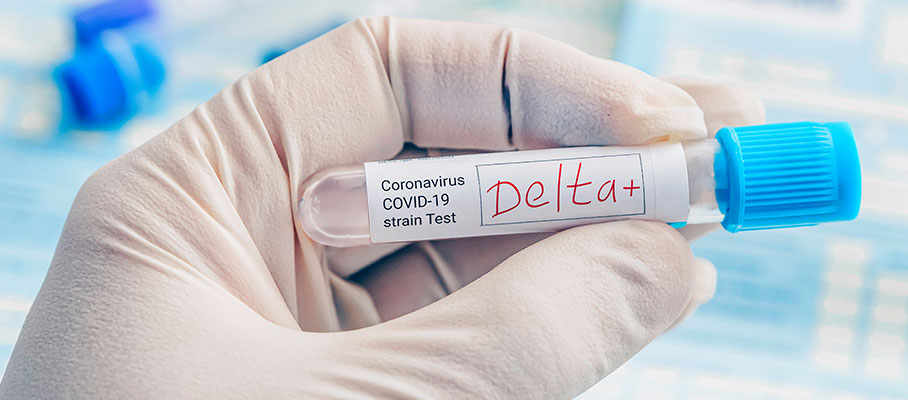
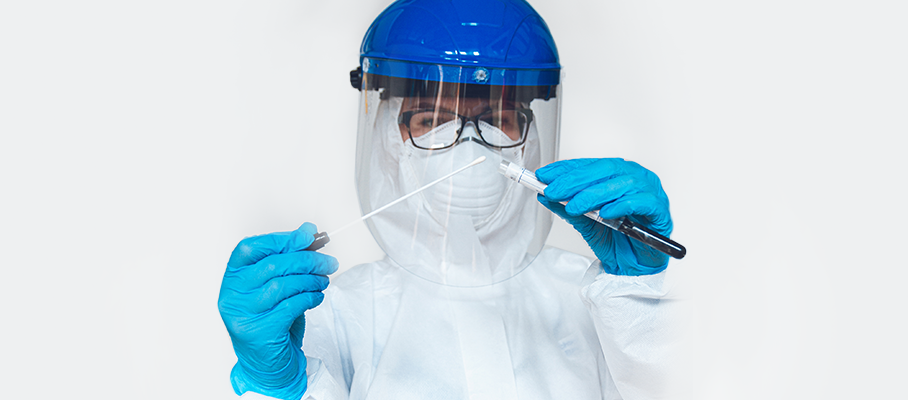
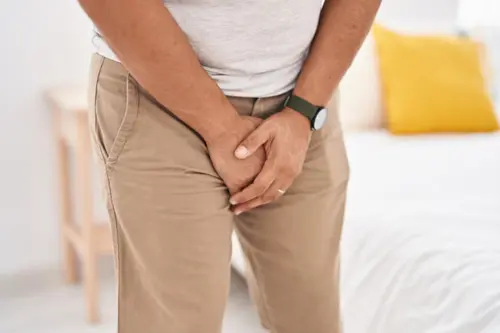
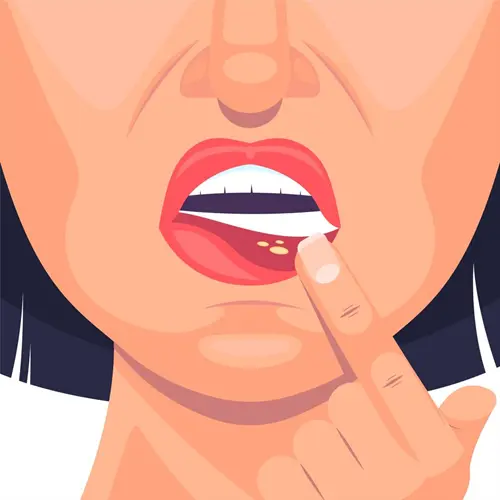
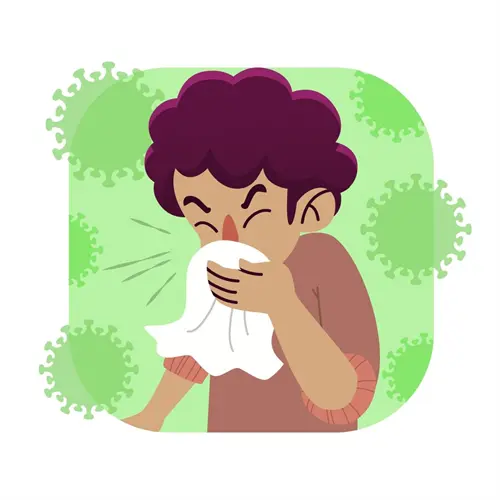
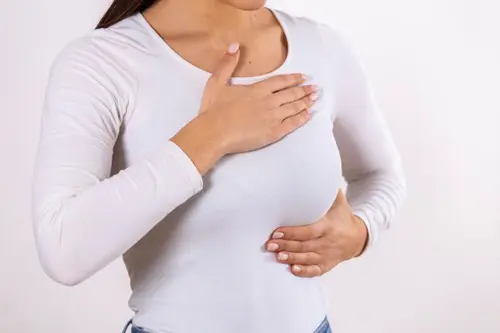

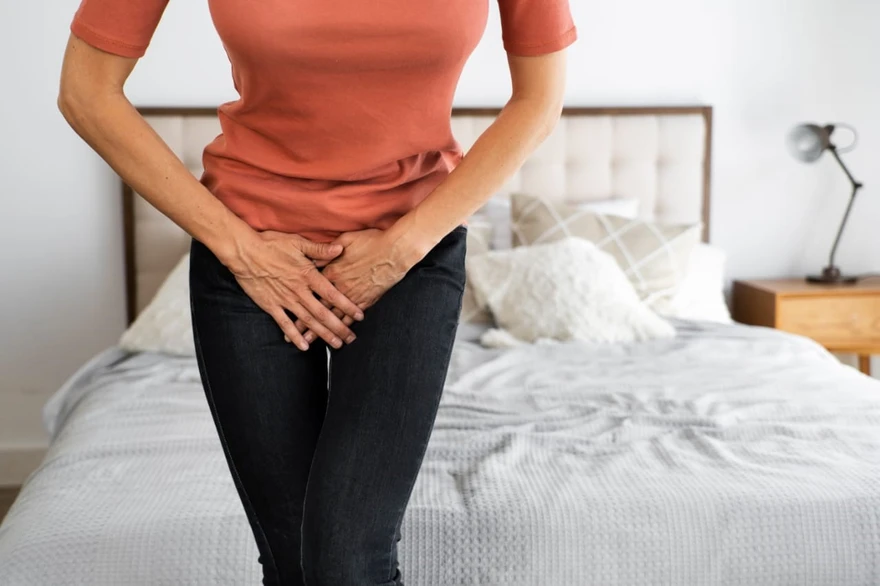

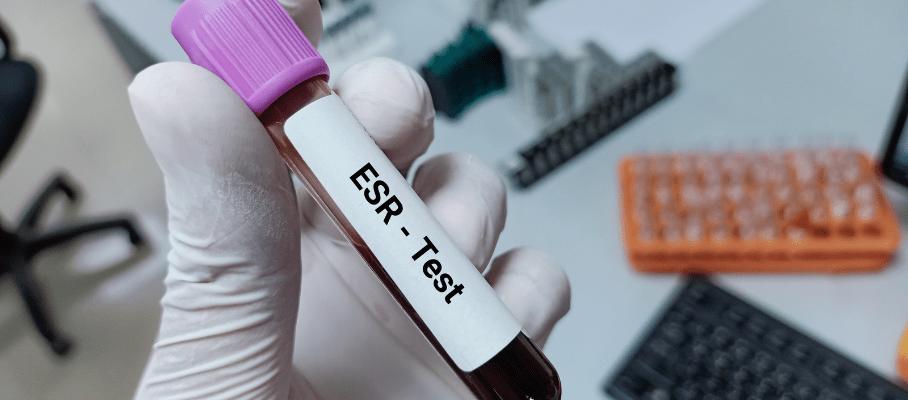

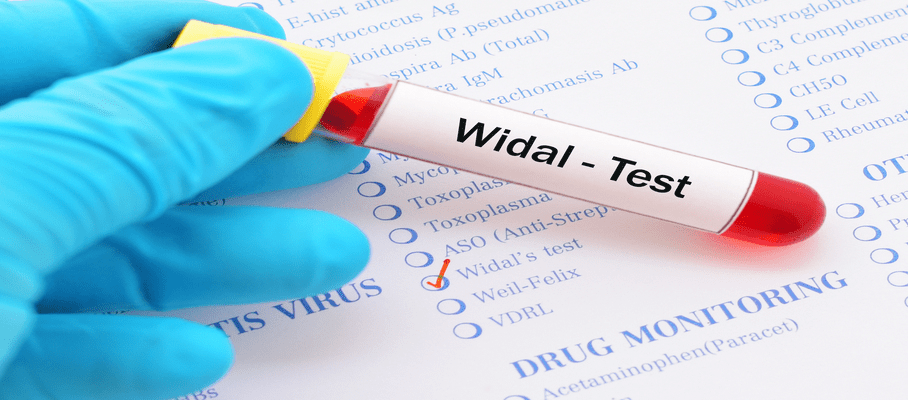
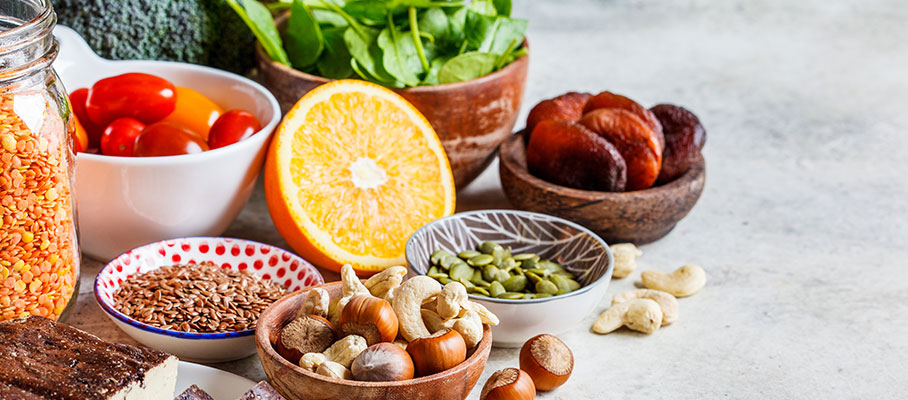

 WhatsApp
WhatsApp